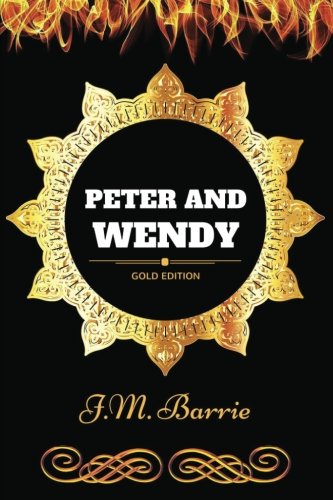This post contains affiliate links. As an Amazon Associate I earn from qualifying purchases
Why buy our paperbacks?
Standard Font size of 10 for all books
High Quality Paper
Fulfilled by Amazon
Expedited shipping
30 Days Money Back Guarantee
BEWARE of Low-quality sellers
Don’t buy cheap paperbacks just to save a few dollars. Most of them use low-quality papers & binding. Their pages fall off easily. Some of them even use very small font size of 6 or less to increase their profit margin. It makes their books completely unreadable.
How is this book unique?
Unabridged (100% Original content)
Font adjustments & biography included
Illustrated
About Peter And Wendy: By J. M. Barrie
Peter Pan; or, the Boy Who Wouldn’t Grow Up or Peter and Wendy is J. M. Barrie’s most famous work, in the form of a 1904 play and a 1911 novel. Both versions tell the story of Peter Pan, a mischievous little boy who can fly, and his adventures on the island of Neverland with Wendy Darling and her brothers, the fairy Tinker Bell, the Lost Boys, and the pirate Captain Hook. The play and novel were inspired by Barrie’s friendship with the Llewelyn Davies family. Barrie continued to revise the play for years after its debut until publication of the play script in 1928. The play debuted in London on 27 December 1904 with Nina Boucicault, daughter of playwright Dion Boucicault, in the title role. A Broadway production was mounted in 1905 starring Maude Adams. It was later revived with such actresses as Marilyn Miller and Eva Le Gallienne. The play has since been adapted as a pantomime, stage musical, a television special, and several films, including a 1924 silent film, Disney’s 1953 animated full-length feature film, and a 2003 live action production. The play is now rarely performed in its original form on stage in the United Kingdom, whereas pantomime adaptations are frequently staged around Christmas. In the U.S., the original version has also been supplanted in popularity by the 1954 musical version, which became popular on television. The novel was first published in 1911 by Hodder & Stoughton in the United Kingdom and Charles Scribner’s Sons in the United States. The original book contains a frontispiece and 11 half-tone plates by artist F. D. Bedford (whose illustrations are still under copyright in the EU). The novel was first abridged by May Byron in 1915, with Barrie’s permission, and published under the title Peter Pan and Wendy, the first time this form was used. This version was later illustrated by Mabel Lucie Attwell in 1921. In 1929, Barrie gave the copyright of the Peter Pan works to Great Ormond Street Hospital, a children’s hospital in London.”All children, except one, grow up.” Thus begins a great classic of children’s literature that we all remember as magical. What we tend to forget, because the tale of Peter Pan and Neverland has been so relentlessly boiled down, hashed up, and coated in saccharine, is that J.M. Barrie’s original version is also witty, sophisticated, and delightfully odd. The Darling children, Wendy, John, and Michael, live a very proper middle-class life in Edwardian London, but they also happen to have a Newfoundland for a nurse. The text is full of such throwaway gems as “Mrs. Darling first heard of Peter Pan when she was tidying up her children’s minds,” and is peppered with deliberately obscure vocabulary including “embonpoint,” “quietus,” and “pluperfect.” Lest we forget, it was written in 1904, a relatively innocent age in which a plot about abducted children must have seemed more safely fanciful. Also, perhaps, it was an age that expected more of its children’s books, for Peter Pan has a suppleness, lightness, and intelligence that are “literary” in the best sense. In a typical exchange with the dastardly Captain Hook, Peter Pan describes himself as “youth… joy… a little bird that has broken out of the egg,” and the author interjects: “This, of course, was nonsense; but it was proof to the unhappy Hook that Peter did not know in the least who or what he was, which is the very pinnacle of good form.” A book for adult readers-aloud to revel in–and it just might teach young listeners to fly. (Ages 5 and older) –Richard Farr
This post contains affiliate links. As an Amazon Associate I earn from qualifying purchases
